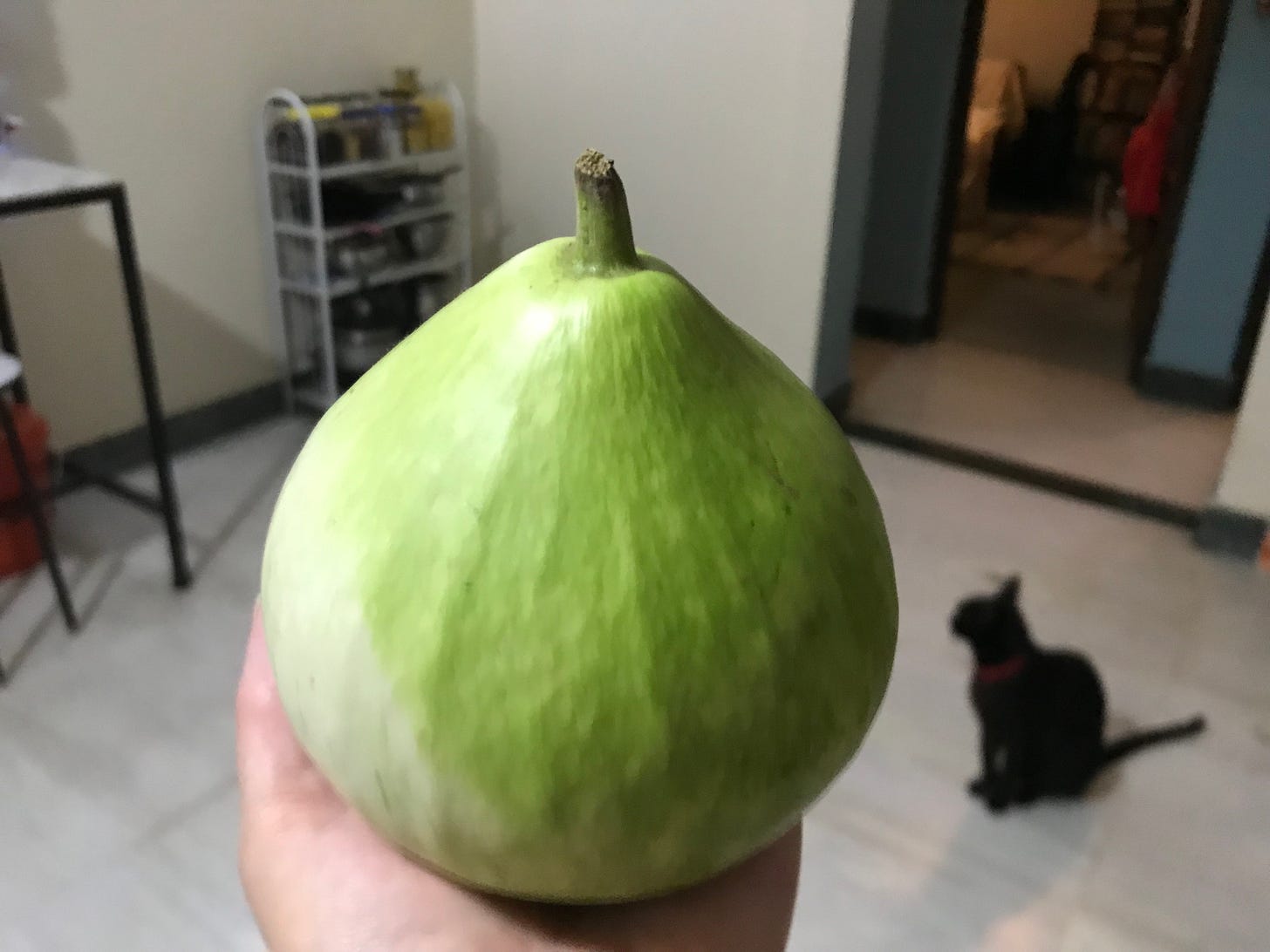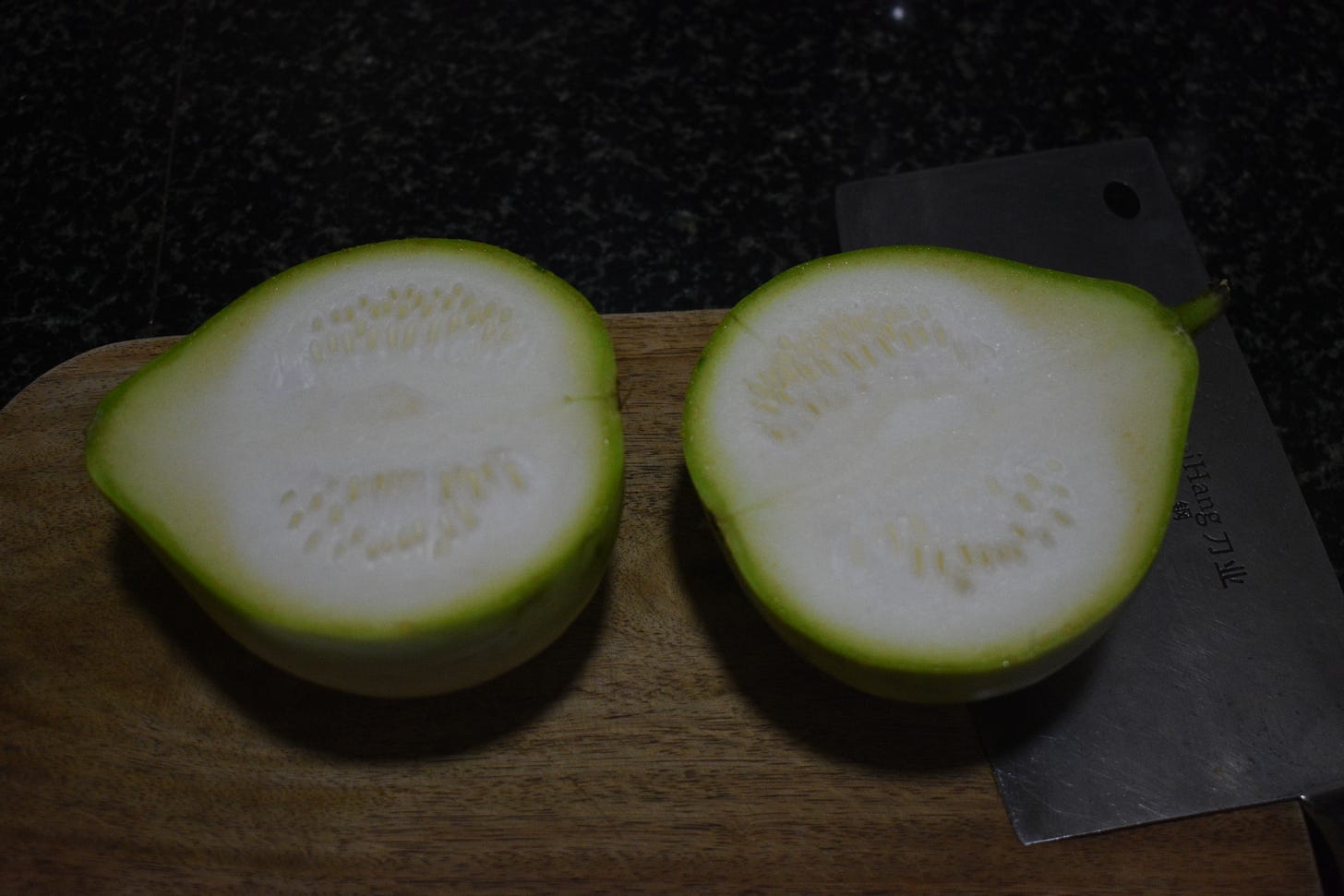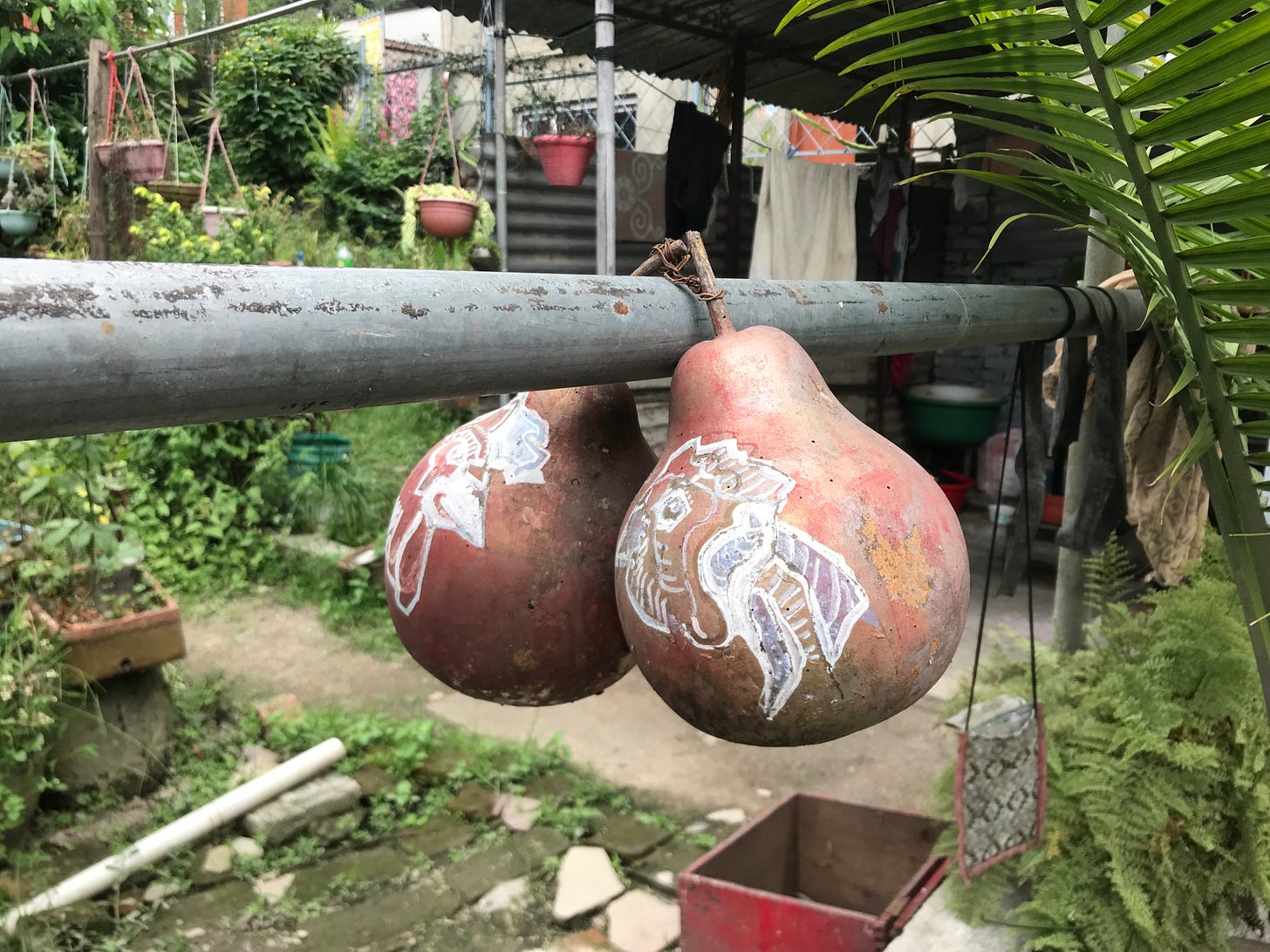Yesterday at my nearest corner store, I grabbed a random, roundish gourd, a very attractive shade of green and white.
“How do you prepare it?”
“With alu and masala…”
Fair, that’s how vegetables are most often eaten here, and do I love them spiced and in curries. But I also wanted to really taste the gourd.
**
Recently I came across a short YouTube video about traditional, pre-colonisation vegetables in India. With the important caveat that Nepal was never colonised, it was interesting because there are definite similarities between traditional foods eaten by certain Nepali ethnic groups and those consumed in some parts of our southern neighbour. Mostly I was fascinated by the gourd variety that popped up on screen for a few seconds, gourds being a food that apparently do have a long history in this region, unlike the (relatively, in the vast scheme of things) more recent potatoes, tomatoes, aubergine/eggplant and the like.
**
I’ve gotten kind of into gourds lately? Is that a weird thing to say? There are just so many varieties, and they’re so different and interesting. I’ve written about cooking bitter gourd and snake gourd, and not long ago I was treated to a home-cooked ridged gourd curry, and I think it’s this last one that really got me interested, just because it was so different. And so good.
It made me wonder about all the others.
**
Once home, a quick Google search of my impulse purchase led me to tinda, or apple gourd. Images varied, but I found a few that looked like my handsome fellow. And it’s such a fun name!
Cut open, it didn’t have the semi-empty interior of some other gourds I’ve tried, but was solid through, white with immature seeds visible, a rim of green around the flesh closest to the skin.
My search turned up very little in the way of recipes—two curries—but there was a mention of using it in a raita—gourds are members of the cucurbit family after all—so I decide to taste it raw. The first hit I got was of cucumber, but it’s firmer and crunchier… then I’m getting almost an avocado-like creaminess: very strange, unexpected. There is no bitterness.
For dinner I added some slices to my Korean-inspired-but-not-traditional kimchi-doenjang-based soup, where it managed to soak up the broth deliciously, while still retaining its firmness. After a while the middle parts did sort of dissolve into the soup, but the edge by the skin (I didn’t peel it, because it wasn’t in online curry pic) were still toothsome. Since gourds often go to mush, I found the texture very pleasing.
**
Later, after more browsing, I started to wonder: on most apple gourds the stem is a bit of an innie, like on its actual namesake fruit, and though I found a few apple gourds that looked like mine, I started to feel less confident. A search for “round gourd” led me to the bottle gourd, which I usually think of as elongated but apparently can be multiple shapes, including round ones that looked very like my own.
To confirm, I showed several people a picture of my gourd while out today.
“That’s lauka,” was the immediate and unanimous answer after the barest glance at my phone.
Lauka is in fact bottle gourd, or calabash, or sponge gourd, or one of the other many names for it around the world, which I learned from quick perusal of its Wikipedia page. I also found out that the hollow dried shells have been used in various countries not just as an expected food, drink, or medicine vessel, but as a component in instruments, a “helmet” by motorcyclists trying to get around mandatory helmet laws, and even to give enemas. Versatile much? Uhm.
It’s unclear to me still whether the bottle gourd can or should be eaten raw, but I’m still here and it was delicious both raw and cooked. I’m thinking to roast what I have left. It’s a delight. If this is not news to you, please tell me how you like to eat them. Or any gourd story, really. Do you have a favourite? Should I try to eat every gourd in Nepal?
**
In a bit of strange but very Kathmandu-esque serendipity, on my way home this afternoon I photographed this beauty in my neighbour’s garden, just because. Only after did it register: I think they’re bottle gourds, but I didn’t know that then.






Gourds are really important here in the American South. For eating and for holding water.